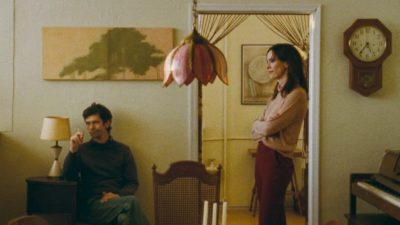One thing I love about historical fiction is that I can learn about real-life personalities whom I haven’t even heard of before. It was Cecilie Enger’s novel The White Map that first made me aware of Bertha Torgersen and Hanna Brummenæs, two intriguing women from the late 19th, early 20th century. Who were they and why is it worth reading about them? I asked Cecilie Enger about this and more on the occasion of the debut of the Hungarian translation of the novel.
I guess most Hungarians are totally unfamiliar with these two main characters.
So are Norwegians. The first time I came across them was when I saw their photograph some years ago. They sparked my interest so I started to read about them, and I realised that they haven’t really left any traces about themselves. No letters, no books, no personal notes, only some dry statistics about their shipping enterprise. Of my ten novels so far, three deal with women of this historical era, but it was clearly Bertha and Hanna who left the least sources behind. Therefore I had to work in another way: I needed to use my imagination a lot to reconstruct their voices and emotions. All the sources I could find have made their way to the novel, but there is still so much that we can only guess.
What might be the reason for their silence?
One obvious reason is that they were very successful businesswomen. They led an unusual life: they had something which was considered as a men’s job in their times, dressed like men, and they also communicated a bit like men. They didn’t write anything about their emotions like diaries or letters, but we know some business documents and obviously their testaments in which they both leave everything to one another. This is one implication about how strong their bond was.
How did you create their personalities from this almost total absence of sources?
Both in my novel and probably also in reality, it is Bertha who changes the most in the process. I’m pretty sure she wouldn’t be happy to see that I made her a main character: she was a shy woman. She was prepared for a life of silent obedience, just like it was expected from women. They either got married and started their own family, or were expected to live at home and take care of their family members, first the parents, then the siblings, nephews and nieces. Interestingly, this social organisation started to change in Bertha and Hanna’s youth. It became more and more acceptable for unmarried women to form households together and support each other. They were mostly seen as friends or housemates. The idea that such women might be more than that, such as domestic partners who involve in a romantic and even sexual way was not even considered. No surprise, because before psychoanalysis started, female sexuality wasn’t acknowledged and understood at all. There were some very bizarre ideas in Norwegian society, such as that a woman cannot feel sexual arousal until the birth of her first child.
What do you think, were Bertha and Hanna in a relationship?
It’s difficult to say, but there is a quite telling detail. In their times, even married couples slept in separate single beds. Even my own grandparents had such beds. There is a historical documentation of the first double bed arriving in the market after 1919, and the director of the local museum showed me the proof that it was Bertha and Hanna who bought it. I think this is a funny but also sweet little sign that helped me imagine the nature of their relationship.
But as I mentioned, in those days there was no word about female homosexuality, most people didn’t even know about its existence. Bertha and Hanna had no example to follow, they just went along with their own intuitions. This is one interpretation of the title: their map was completely blank. I think their life was in many ways quite difficult, because they needed to build up an identity out of nothing, and invent a language that wasn’t used before. Their experience was very different from what contemporary lesbian/queer women experience. Bertha and Hanna had the disadvantage that they didn’t have a whole community of people like them to reach out to; however, they had the advantage that people didn’t grasp the full nature of their relationship, and therefore they didn’t need to face the amount of discrimination that many queer people face today, unfortunately even in some European countries.
Was it a big challenge to create ‘feminist’ and ‘queer’ icons out of two people who lived in a time so different from ours, both in terms of their realities and their (absence of) terminology?
It is an interesting fact that whereas Bertha and Hanna lived this very emancipated, independent and successful business-centred life as a same-sex couple, they didn’t mean to make their personal life political. They had no interest in social movements to change things for the whole community. However, even if they didn’t have it on their agenda, the mere fact that they lived such an authentic life still had a cultural impact on the following generations, for whom they served as role models.
How do you feel about your novel being published in Hungarian? I heard that you were a guest of the Margó Festival.
It was a truly pleasant experience to be in Hungary in October. The organisers were very nice to me, they read everything so well, and the audience was engaged, too. I hope Hungarian readers will enjoy getting to know my version of Bertha and Hanna’s story.

























Comments